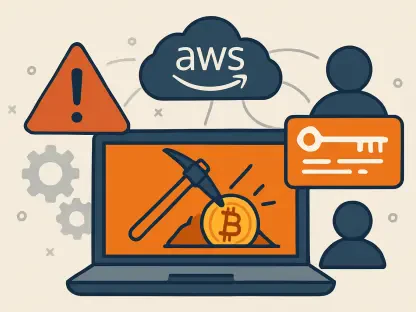With K-12 schools increasingly migrating their data and applications to cloud-based systems like Software as a Service (SaaS) and Infrastructure as a Service (IaaS), the landscape of IT management is experiencing a significant shift. As traditional on-premises systems are phased out in favor of more flexible and scalable cloud solutions, the importance of cloud security has never been more paramount. The array of unique vulnerabilities present in these environments poses critical challenges that IT managers must navigate to ensure the protection of sensitive student data.
Understanding Cloud Security Responsibilities
In the transition from traditional on-premises systems to modern cloud environments, securing data becomes a collaborative endeavor between the school’s IT team and the cloud service provider. This shift mandates a thorough understanding of the shared responsibility model for security, wherein certain aspects are managed by the provider while others remain under the jurisdiction of the school’s IT department. A clear delineation of these roles is essential to avoid confusion and ensure comprehensive security coverage.
For IT managers, leveraging the security features offered by cloud service providers is crucial. The first step involves gaining insight into the division of security responsibilities. Typically, cloud providers handle the infrastructure, hardware, and software related to the cloud services. This includes securing the physical servers, network components, and the cloud applications themselves. However, the security of data, identity and access controls, and proper configuration of these services falls squarely on the shoulders of the school’s IT team. Therefore, understanding and implementing the full scope of the provider’s shared responsibility model is pivotal in mitigating security risks.
Mitigating Data Breaches in Cloud Environments
Data breaches pose one of the most significant threats to K-12 cloud environments due to the immense amount of sensitive information stored, including grades, health records, and financial details of students. The unique attributes of cloud-based applications can make IT managers feel somewhat distanced from direct control compared to traditional systems. However, gaining in-depth knowledge of how to properly configure and secure these systems is necessary to prevent potential breaches and safeguard student information.
Key strategies to mitigate data breaches include enabling encryption for data at rest and transit, implementing multifactor authentication (MFA) for all users, and deploying zero-trust security features like geographic fencing and user behavior anomaly detection. Encryption ensures that data remains indecipherable to unauthorized individuals, while MFA adds an additional layer of verification to confirm user identities. Zero-trust security, which adopts a “never trust, always verify” approach, further strengthens the defenses by continuously monitoring and validating users and devices. Regular security audits and configuration reviews are essential to adapting and updating security measures according to new features and changes in the cybersecurity landscape. Schools must remain vigilant and responsive to the evolving nature of threats, ensuring that their data protection strategies are robust and effective.
Controlling Unauthorized Access
Preventing unauthorized access is another critical component of securing K-12 cloud environments, as the diverse access control models of various SaaS applications introduce additional complexity. Centralized management of identity and access is fundamental, with role-based access controls, logging, and auditing playing crucial roles in a robust security strategy. Ensuring that only authorized personnel can access sensitive data is imperative for maintaining the integrity and confidentiality of student information.
An effective identity and access management (IAM) system should seamlessly integrate with all SaaS applications used by the school. This allows IT teams to maintain control over who has access to what data and ensures consistent enforcement of security policies across all cloud-based services. Monitoring application usage and detecting unauthorized or excessive access early enables swift response to potential threats, including shutting down compromised user accounts if suspicious activity is detected. Additionally, providing a reliable audit trail for retrospective investigation of events is crucial for understanding and addressing security breaches.
Addressing API Vulnerabilities
APIs are critical for communication between cloud applications but can present significant security risks if not managed properly. The challenge lies in securing these connections due to their typically static and long-lived authentication methods, which may include digital certificates. While strong authentication methods are available, improper management of API keys poses a vulnerability that IT managers must address to safeguard inter-application communications.
IT managers need to understand the lifecycle of API keys, implementing regular rotations and quick response mechanisms for disabling compromised keys. This involves setting up schedules for API key rotation to ensure that compromised keys do not remain active for extended periods. Avoiding the sharing of API keys across multiple platforms and providing unique keys for individual users and applications enhances control and tracking of usage. In environments where tools are developed internally, IT managers must ensure developers do not hard-code keys into applications and test environments, as this can lead to potential security breaches if the code is accessed by unauthorized individuals.
Enhancing Security Measures
Proactive engagement with the security features provided by cloud services is necessary for maintaining a strong security posture. Leveraging advanced monitoring tools, alerting mechanisms for suspicious behavior, and comprehensive reporting capabilities enables IT managers to understand and react to potential threats in real time. These tools provide visibility into the cloud environment, allowing for timely identification and mitigation of security incidents.
Continuously educating and training IT staff on cloud security best practices is essential for enhancing the overall security framework. Ensuring that the IT team is well-versed in using and adapting to new security features and tools rolled out by cloud service providers is crucial. Regular training sessions, workshops, and staying updated on the latest security trends and threats help build a knowledgeable and prepared IT team that can effectively manage and secure the cloud environment.
Ensuring Proactive Management
As K-12 schools transition their data and applications to cloud-based systems like Software as a Service (SaaS) and Infrastructure as a Service (IaaS), the field of IT management is undergoing a major transformation. Moving away from traditional on-premises systems to more adaptable and expandable cloud solutions is reshaping how schools handle their technology needs. This shift underscores the critical importance of cloud security, which has become a key priority. The unique vulnerabilities inherent to these cloud environments present significant challenges that IT managers must address to secure sensitive student information effectively. Ensuring robust security measures and constant vigilance is essential to safeguard this data against potential breaches and threats. Cybersecurity strategies must be comprehensive, encompassing proactive monitoring, threat detection, and incident response protocols. As educational institutions continue to leverage the cloud’s benefits, the commitment to maintaining stringent security standards is vital to protect student privacy and data integrity.









